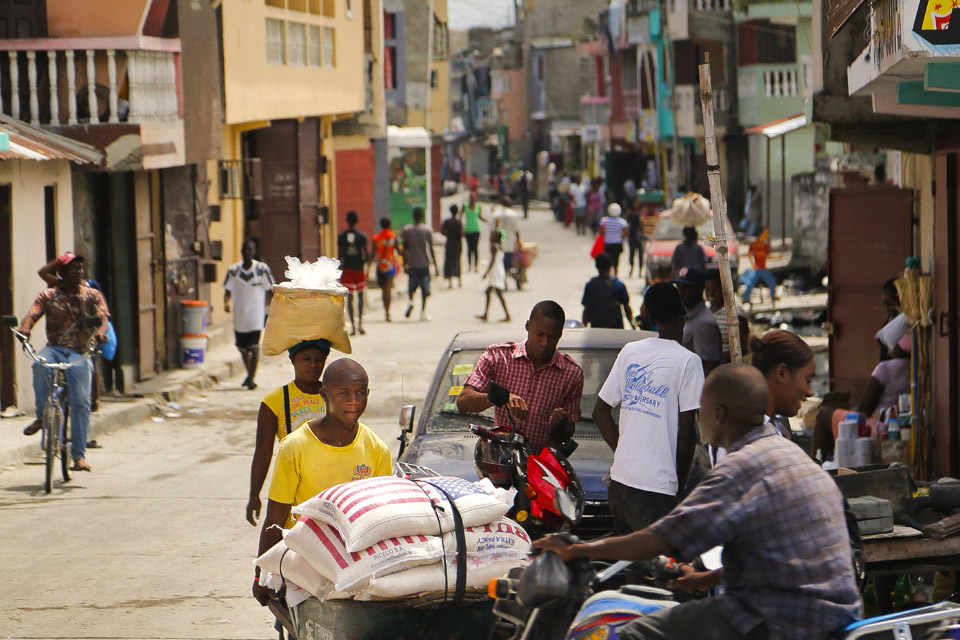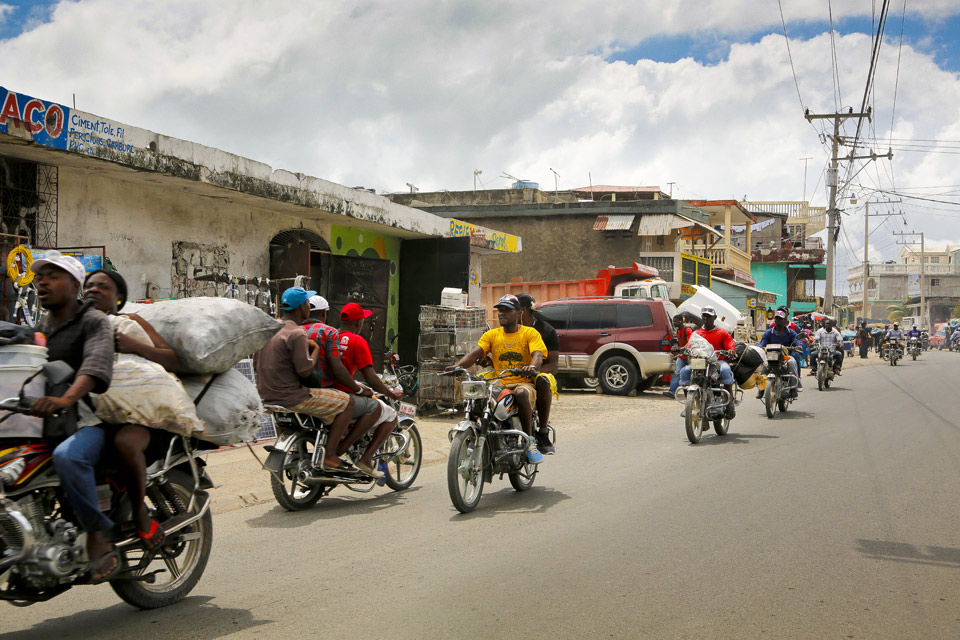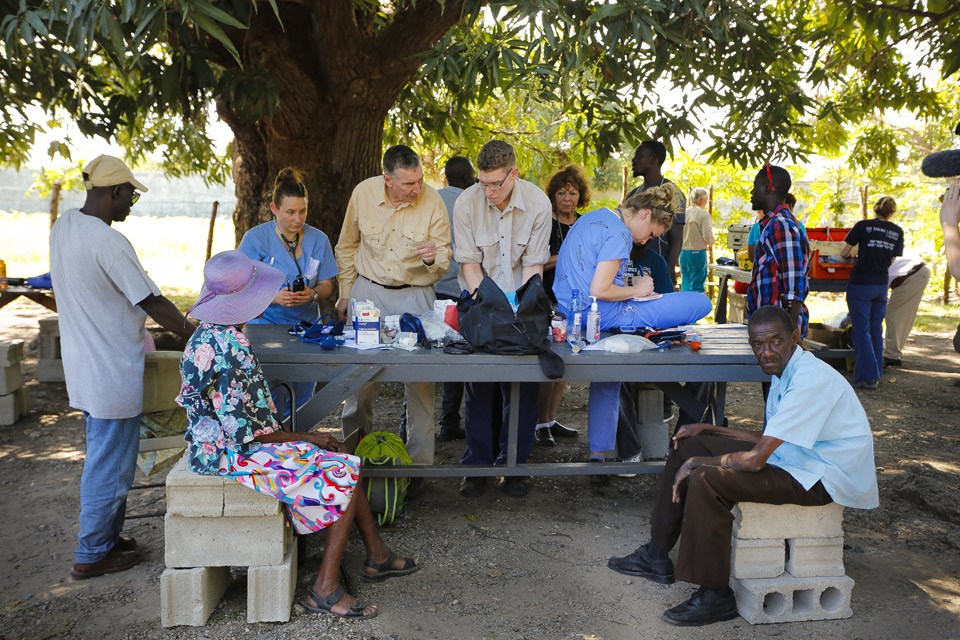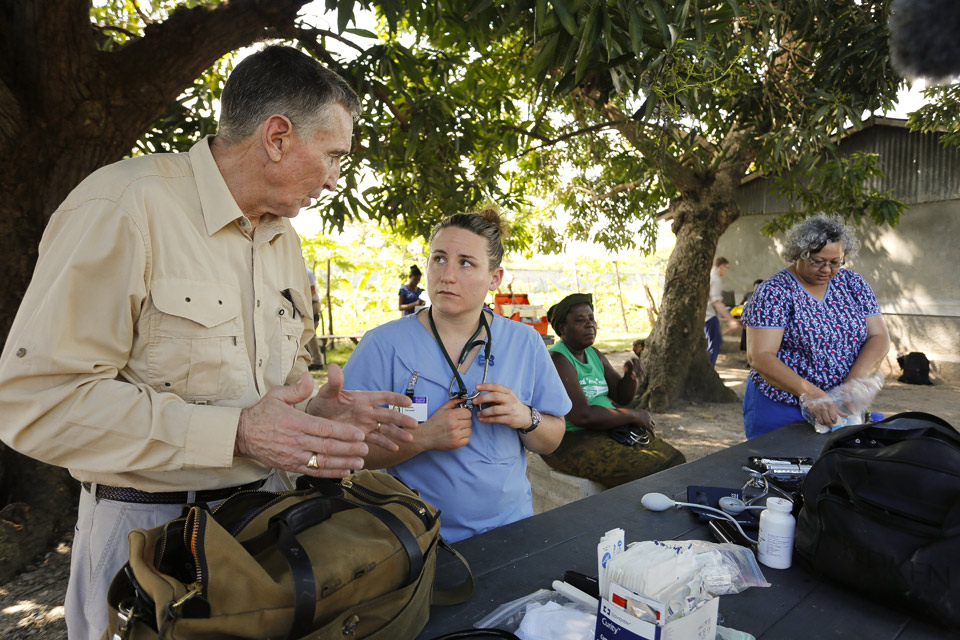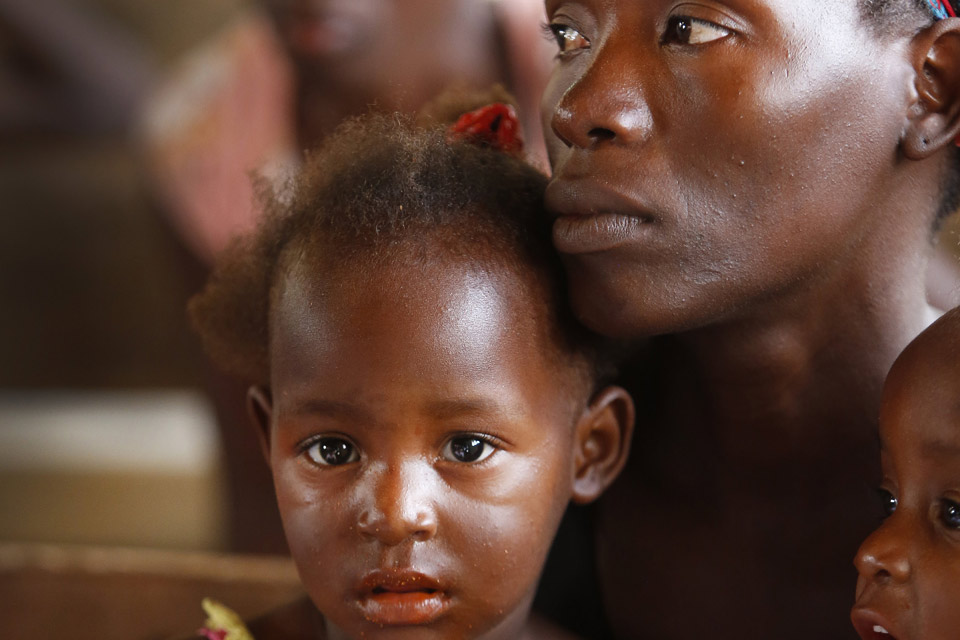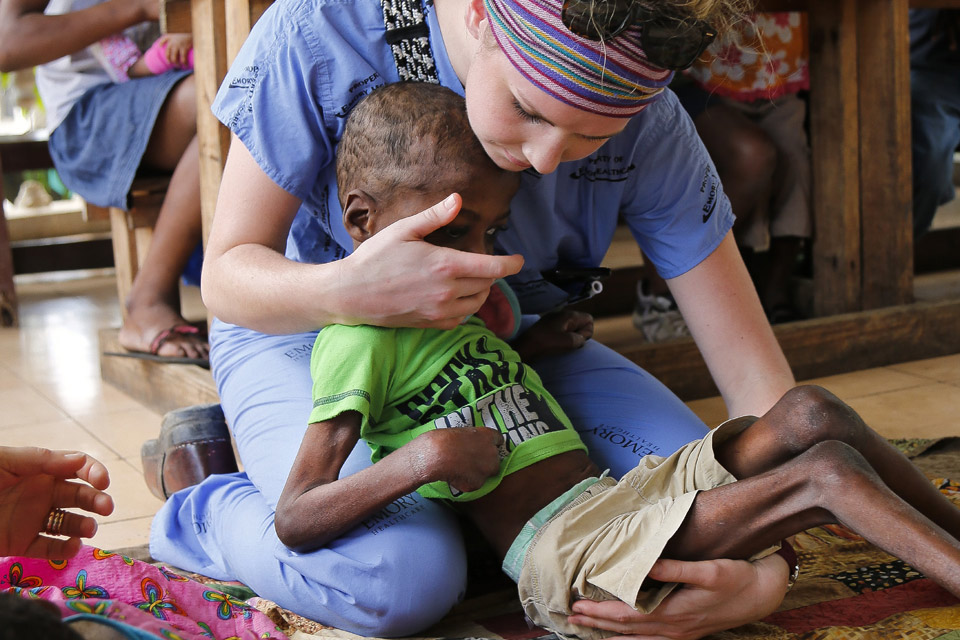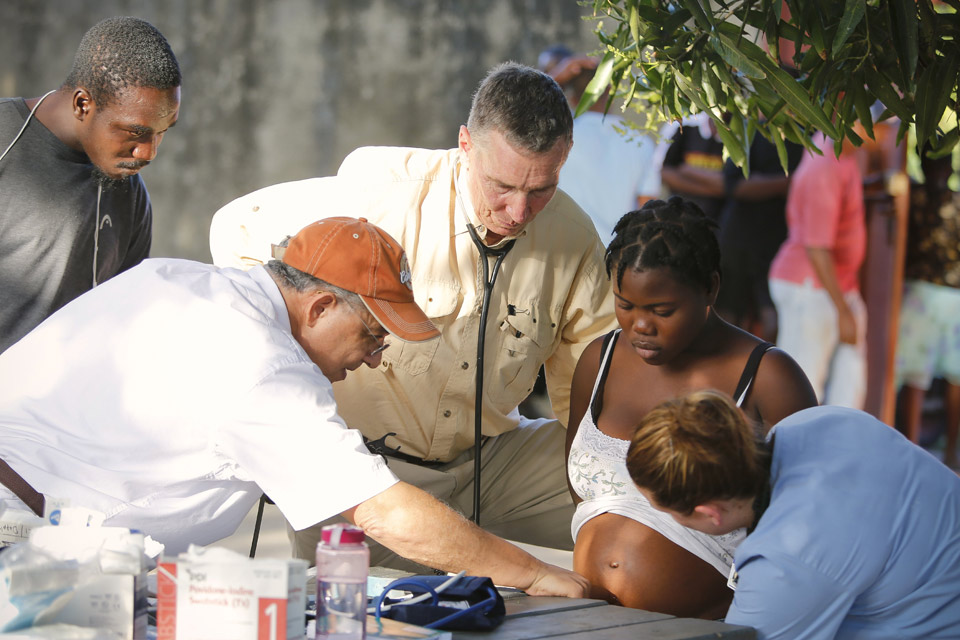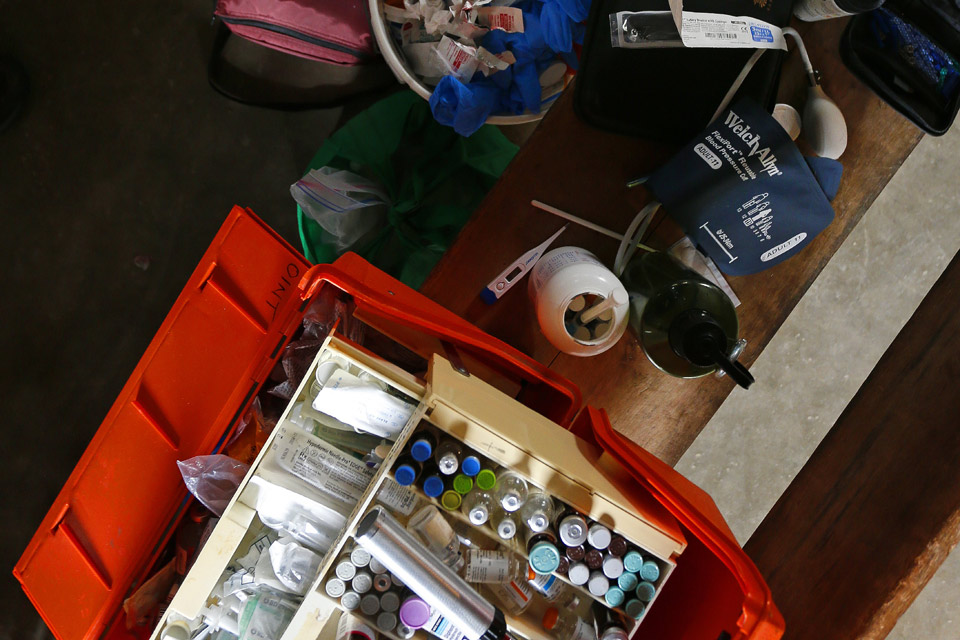One patient at a time
Flying relief into Haiti is measured in small victories
Billowing cumulus clouds cling to the jagged, green-sided peaks rising more than 8,000 feet from the Caribbean at Cap-Haitien, Haiti. From a distance of 30 miles, Haiti—the island where Christopher Columbus landed in 1492, and his flagship Santa Maria later sank—appears majestic and serene.
“It looks like a paradise from here,” Randy Rizor, an Atlanta physician, says wryly from the left seat of his Beech Bonanza A36. Rizor has been making medical volunteer flights here for 21 years. “But appearances can be deceiving.”
As we get closer, the island nation’s hard realities become apparent.
Hillsides are denuded of trees, and topsoil bleeds down the valleys in rivers of cocoa-colored silt that eventually spill into the sea. Vast slums of mostly cinderblock dwellings sprawl across the flat coastal areas and climb into the foothills; narrow streets are choked with traffic; and the air is thick with smog, dust, and constant smoke that carries the stench of burning waste.
Rizor guides his Bonanza towards the Hugo Chavez International Airport at Cap-Haitien with no illusions about what he’ll encounter after landing in the poverty-stricken city of more than 1 million people. For the next five days, he and fellow medical volunteers will confront typhoid, tuberculosis, malaria, HIV, malnutrition, waterborne parasites, and myriad other maladies while working in the most austere conditions.
They’ll have none of the modern diagnostic equipment, computers, and laboratories that they rely on at home. And the idealistic volunteers—whose medical training teaches them to see things for what they are—must come to terms with overwhelming and discouraging evidence that they appear to be fighting a losing battle.
“There’s no getting around the fact that, in many ways, the things we see in Haiti now are even worse than when I started coming here,” said Rizor, 62, who makes his living as an anesthesiologist treating first-world problems such as back and neck pain among the golf set. “On a macro scale, our efforts here have been a failure. We’ve been doing this work for decades, and we can’t show that we’ve moved the needle in a positive direction.
“But when you look on the micro level, you’ll see real people whose lives are better because we came and we helped,” he said. “We treat individuals, not statistics. Our progress is measured one patient at a time.”
Spirit and dignity
Rizor flew his own airplane to Haiti for the first time in 1994 on what he thought was a one-time journey to deliver emergency medical supplies. Once on the ground, however, Twilla Haynes, an Atlanta nurse who founded a relief organization called Eternal Hope in Haiti, convinced him to visit an urban clinic beside a fetid, garbage-strewn river.
“I told her I was a specialist and that I’d never practiced tropical medicine before,” he said. “But she wouldn’t take no for an answer. She convinced me to start examining patients, and it didn’t take long for me to realize that even potentially deadly diseases like typhoid and parasites, which are incredibly common here, are easy and cheap to treat. By the end of the day I’d seen 40 or 50 patients, and I didn’t see anything that I didn’t know how to deal with. I realized that I could be helpful doing this kind of work, and the people of Haiti, with their spirit and dignity, really affected me.”
Rizor made quarterly trips to Haiti until 2002 when, in the wake of the September 11, 2001, terrororist attacks, he joined the U.S. Army Reserves and, during the next five years, deployed twice as a military doctor to Iraq. There, he served in operating rooms near the front lines treating sometimes grievously wounded U.S. service members.
“The call to action following 9/11 was something that just couldn’t be ignored,” he said. “I had skills that our country needed, and I wanted to contribute. But now the demand from the military has dropped off to the point that it’s allowed me to resume volunteering in Haiti.”
Road warriors
In his airplane, Rizor checks in with Port-au-Prince Approach and follows the directions of a French-accented controller as he follows an American Airlines A319 landing on Runway 23. He taxis to the ramp where he and his Bonanza are well known from many previous visits. There’s no avgas for sale here, so Rizor stops at Great Inagua Island in the Bahamas to top off the tanks on the way to Haiti, or on the way home. If he fills the tanks at Great Inagua on the way, and the wind is right for the trip home, he can return to Florida nonstop.
Rizor owns his A36 in partnership with two other Georgia pilots, and the airplane is well suited for medical flights. Its voluminous cabin can accommodate bulky medical supplies, and cargo doors allow easy access on the ground. He uses a FlashPass eAPIS app that simplifies U.S. border crossings, and his cellphone plan allows voice calls throughout the Caribbean.
Rizor used to fly a Beechcraft Baron B58 on these trips but sold it after a faulty air pump overheated and caused a cabin fire over the Caribbean. He says he doesn’t mind flying a single-engine airplane over water because he follows the Bahama archipelago, is seldom out of sight from land, and flies above 8,000 feet to remain in constant ATC radio contact. If he loses radio contact with ATC, pilots in the steady stream of airliners passing overhead can be counted on to relay messages.
Besides, the risks of flying are trivial compared to driving the streets of Cap-Haitien, where there are no traffic lights, no stop signs, and normally laid-back Haitians become road warriors in vehicles ranging from heavy diesel trucks to swarming motorcycles carrying three or more people each.
“I feel a lot safer in the air,” Rizor said, “than I do on the roads.”
Focus on healing
Rizor and about a dozen fellow medical volunteers ride to and from clinics in a “tap tap,” a Dodge 250 pickup that serves as a group taxi with elevated, open-air bench seats in back and a sunshade overhead. (The name comes from the double tap riders make on the cab, signaling a request to the driver to stop or go.)
On a typical weeklong trip, the volunteers stay at the Mont Joli Hotel, a tidy, two-story facility with panoramic views of the city below. Each morning they ride to a different medical clinic, work all day without pause, and return just after sunset. They provide care in bucolic country settings where the volunteers perform their tasks in the shade of mango trees; and they work in the most dangerous slums by the riverfront where pigs, goats, and dogs rummage through seemingly endless heaps of garbage.
Each day is a grueling marathon, but Rizor says he feels strangely energized at the conclusion of each session. There are no insurance companies or hospital administrators to deal with, no reports to write, and no forms to fill out. There are only patients in need of care, and the focus is on healing. “This is what drew me to medicine in the first place,” Rizor said. “At home, it’s easy to forget that.”
Patients sometimes gather outside the hotel where the medical team stays. And they await the volunteers at each clinic they visit. Even though the volunteers work quickly and without interruption, lines of patients grow throughout the day as word spreads via cellphone calls and text messages that doctors and nurses are dispensing free medical care.
The volunteers often begin each workday by holding hands in a prayer circle, and a Haitian minister gives a soaring invocation in songlike, French-based Creole. The patients sometimes must wait for hours and through periods of rain and withering sun. It’s not uncommon for tempers to fray in angry shouts and desperate pushing and shoving.
The volunteers rely on simple medical tools: blood pressure cuffs, stethoscopes, flashlights, tongue depressors, as well as their own highly refined senses.
“Don’t let the lack of resources reduce the level of care you provide,” Haynes tells the volunteers, many of whom are students in the nurse practitioner program at Emory University, in a morning briefing/pep talk. “Be resourceful,” she said in a steel-magnolia Southern accent. “Rise above it. Nothing here is easy.”
The worst part
Sometimes things are way beyond not easy. They’re impossible.
That was true following Haiti’s devastating 2010 earthquake, a historic disaster that killed an estimated 60,000 people and maimed tens of thousands of others—and the 2011 cholera outbreak that followed. The medical volunteers and their thin resources were dwarfed by the immense scale of those tragedies.
Haitian orphans, who learned to speak English at a facility Eternal Hope in Haiti operates in Cap-Haitien, serve as translators for the medical volunteers and their protectors.
Outside the clinic gates, the crush of people includes elderly men and women, and mothers with infants in arms. At a picnic table that serves as an examining area for two volunteer teams, there’s both happiness and heartbreak. A young pregnant woman is overjoyed at hearing her baby’s heartbeat for the first time, and unabashed tears stream down her cheeks. At the same moment, a 49-year-old woman stoically listens to the devastating news she says she’s long anticipated—the hard knot in her right breast appears to be cancer that’s likely spread throughout her body.
Some patients can be helped with prescriptions as easy as aspirin, ibuprofen, or antibiotics. Others have advanced ailments far beyond the volunteers’ ability to repair.
Other medical issues are just odd. A mother points out that her 3-year-old boy has six fingers on one hand and asks Rizor to remove the useless and unsightly extra digit. The doctor declines, fearing the infection risk is too high, but he provides a referral to a hospital where the surgery can be done safely. When he glances at the mother’s hands, there are six fingers on each.
Throughout the day, the volunteers treat more than 300 people. But as the sun begins to set, there’s still a line outside the steel gates. Haynes tells the volunteers to pack their supplies and board the tap tap for the 30-minute ride back to the hotel.
“This is the worst part,” Rizor said. “We’re leaving, and we haven’t seen everyone. There are people who have waited outside all day for care that they’re not going to get. It’s hard, but we can only do so much.”
The gates open, and the tap tap drives forward, no one making eye contact with the despondent ones still waiting. “Our only consolation,” Rizor said, “is knowing that we’re going to come out and do this all over again tomorrow.”
Email [email protected]
Giving Back
Dr. Randy Rizor works with the organization Eternal Hope in Haiti, which is a non-profit Georgia-based corporation created in 1993. The AOPA Foundation helps support organizations that are dedicated to helping others through public benefit flying. Each year it grants assistance to worthy organizations that help others through its Giving Back Program. The Giving Back Program was created to show the AOPA Foundation’s appreciation for all the good work being done through GA. Generous donations make it possible for the AOPA Foundation to award 10 grants of $10,000 each year (individuals are not included). For more information on the AOPA Foundation Giving Back Program, visit the website.
Extra: View the video.



